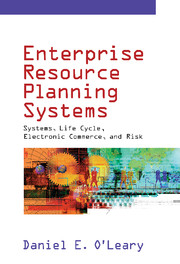1 - Introduction
from PART ONE - INTRODUCTION AND BACKGROUND
Published online by Cambridge University Press: 05 June 2012
Summary
This chapter initiates our dialogue into enterprise resource planning (ERP) systems, focusing on the following questions.
Why investigate ERP systems?
How does ERP create value?
What is the purpose and scope of this book?
What is the outline of this book?
Why Investigate Enterprise Resource Planning Systems?
Enterprise resource planning systems are a corporate marvel, with a huge impact on both the business and information technology worlds, including each of the following dimensions:
ERP affects most major corporations in the world;
ERP affects many SMEs (small and medium enterprises);
ERP affects competitors' behavior;
ERP affects business partner requirements;
ERP has changed the nature of consulting firms;
ERP provides one of the primary tools for reengineering;
ERP has diffused many “best practices”;
ERP gave client server computing its first enterprise product;
ERP has changed the nature of the information systems function;
ERP has changed the nature of jobs in all functional areas;
ERP cost is high;
ERP has experienced huge market growth.
ERP Affects Most Major Corporations in the World (Bowley 1998). A single ERP system (SAP's R/3) is used by more than 60% of the multinational firms. Further, according to Arthur D. Little's global strategy leader, an ERP company (SAP) “is conquering the world. Almost every important company is more or less in its hands.”
- Type
- Chapter
- Information
- Enterprise Resource Planning SystemsSystems, Life Cycle, Electronic Commerce, and Risk, pp. 3 - 12Publisher: Cambridge University PressPrint publication year: 2000
- 2
- Cited by



